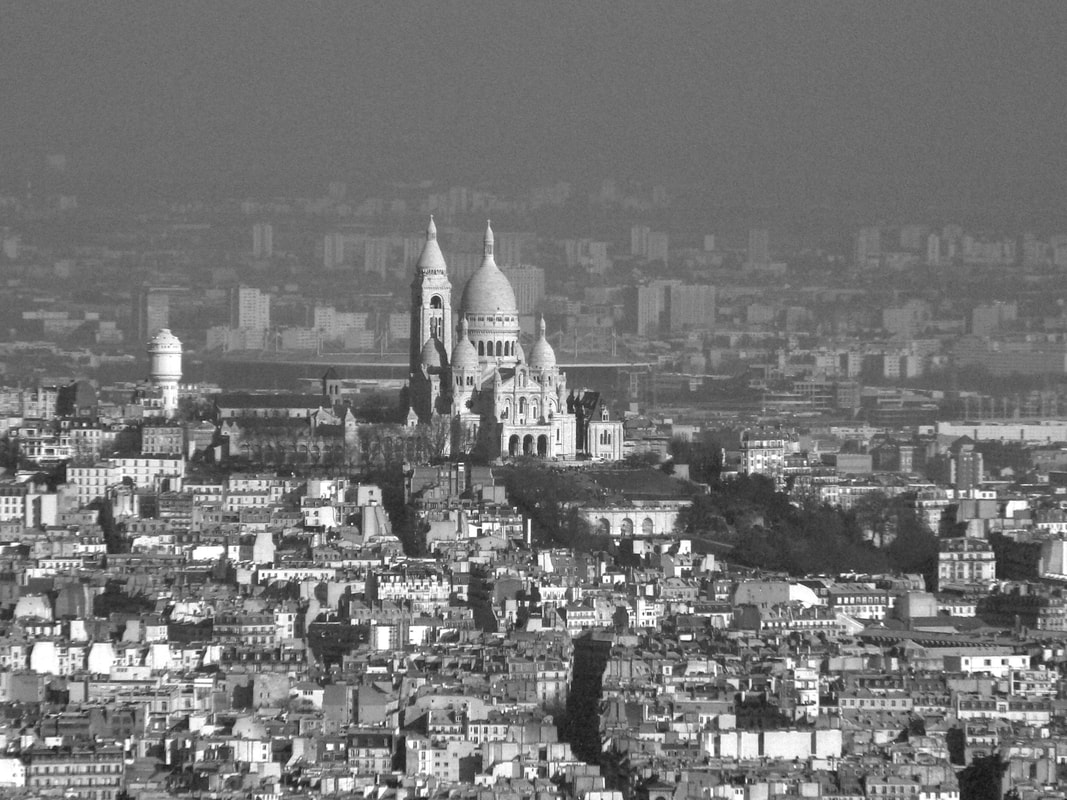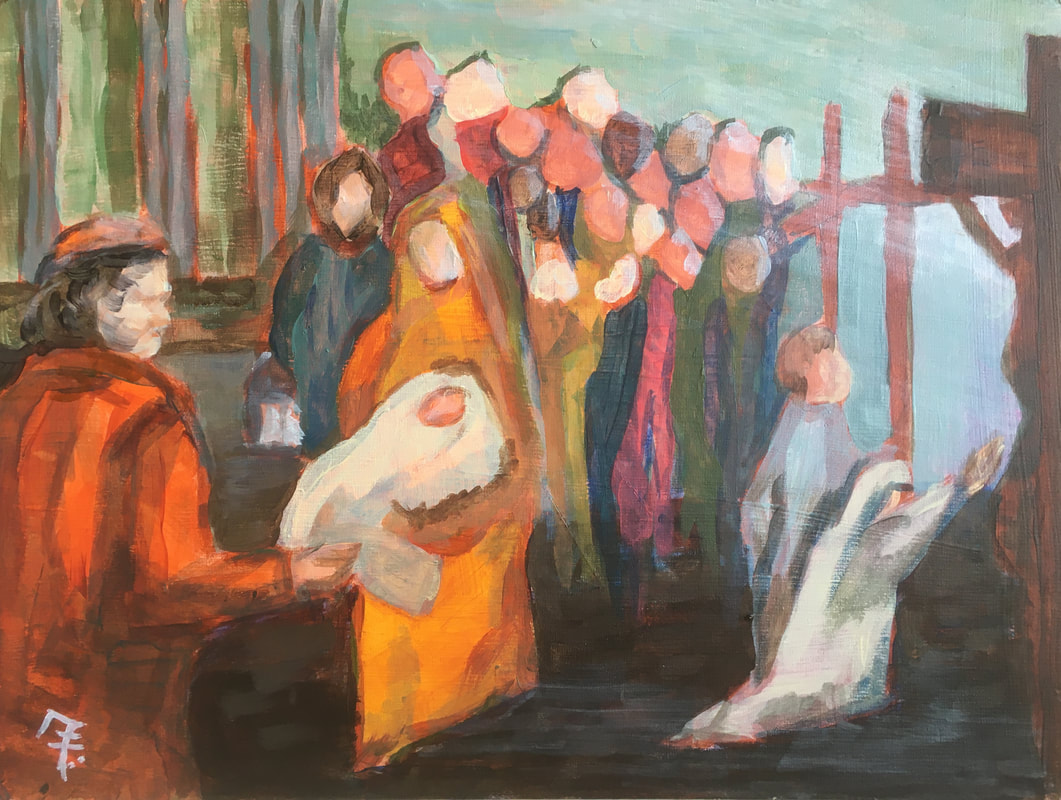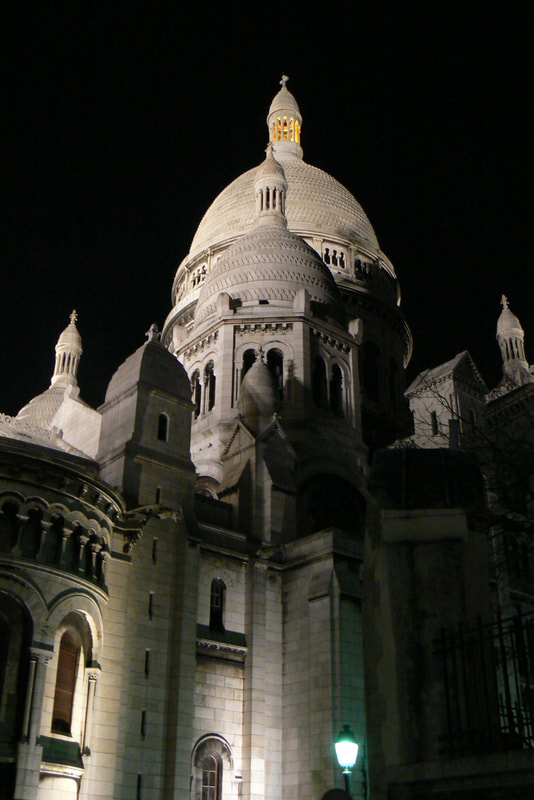|
A sermon I heard challenged me with the question put by Jesus to a blind man he was healing - "Do you see anything?" Reflecting on the experience of the man as he regained his sight and saw Jesus, my mind conjured up the words of Simeon, the man who greeted Mary and Joseph as they went to present the new-born Jesus in the temple and to make their sacrifice.
The painting is a visual reflection on the Gospel passage. You may care to use both in a time of reflection. Luke 2. 22-35 When the time came for the purification rites required by the Law of Moses, Joseph and Mary took him to Jerusalem to present him to the Lord (as it is written in the Law of the Lord, ‘Every firstborn male is to be consecrated to the Lord’), and to offer a sacrifice in keeping with what is said in the Law of the Lord: ‘a pair of doves or two young pigeons’. Now there was a man in Jerusalem called Simeon, who was righteous and devout. He was waiting for the consolation of Israel, and the Holy Spirit was on him. It had been revealed to him by the Holy Spirit that he would not die before he had seen the Lord’s Messiah. Moved by the Spirit, he went into the temple courts. When the parents brought in the child Jesus to do for him what the custom of the Law required, Simeon took him in his arms and praised God, saying: ‘Sovereign Lord, as you have promised, you may now dismiss your servant in peace. For my eyes have seen your salvation, which you have prepared in the sight of all nations: a light for revelation to the Gentiles, and the glory of your people Israel.’ The child’s father and mother marvelled at what was said about him. Then Simeon blessed them and said to Mary, his mother: ‘This child is destined to cause the falling and rising of many in Israel, and to be a sign that will be spoken against, so that the thoughts of many hearts will be revealed. And a sword will pierce your own soul too.’ There are echoes in the past for this passage. Psalm 119.123 My eyes fail, looking for your salvation, looking for your righteous promise.
0 Comments
 From the viewing point on the top of the Montparnasse Tower in Paris the evening light makes the familiar edifice of the Sacré Coeur stand out over the city that surrounds it. The distant suburbs disappear in the haze, but the houses of Montmartre are varied shades, with some shining as light as the church. The image for me is of the Church of Christ witnessing to the city, but not only through its structural institution. It is also, and more importantly, those who witness in their homes and everyday lives. The sunlight does eventually fade, but it moves on elsewhere and the rotations of day and night symbolise for us the eternity within which God dwells. By contrast the flood-lit Sacré Coeur (image below), attractive in the later evening, will be plunged into darkness. The human-created light is of a different quality all-together and has nothing of the eternal about it. So it is, we are called to reflect the light of Christ in the world in which we live rather than offer ourselves alone. The Church of Christ, in its grand architecture or its humble homes, can only reflect and witness. I find another contrast interesting too. Montmartre is perhaps best known as a village of artistic creativity and its night-life, so perhaps it is not the brightest witness to Christian values. However, its name as the Mount of Martyrs springs from the martyrdom of Denis, a local bishop, who was beheaded in 250ad for preaching the Christian gospel. Questions are raised in my mind around how Christian witness may be made in those darker corners of human life. The institutional church stands apart and is often seen as only judgemental and distant, but the personal witness of Christians in everyday life is where the light may be reflected into dark corners. And of course the word ‘martyr’ means ‘witness’! |
Archives
March 2024
|


 RSS Feed
RSS Feed
